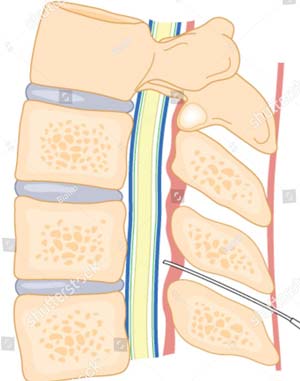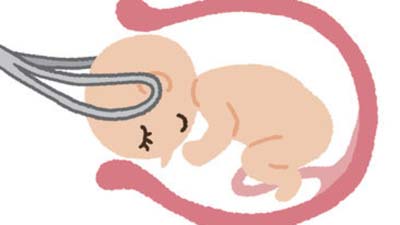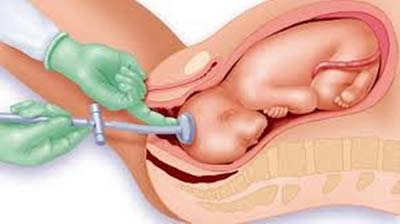The pain of childbirth is not remembered. It’s the child that’s remembered.
Words cannot express the joy of new life.
SYNOPSIS
Labor pain can be excruciating. Many women have low pain thresholds and are unable to bear such pain. For them, painless delivery may be a need. In this procedure, once the active labor begins, an injection of epidural is given. Epidural makes the delivery almost painless. But epidural has certain side effects. Also, it often results in forceps or vacuum delivery. And both these pose risks of injury to the mother and the baby. But natural birth is also not without risks. For example, unrelieved labor-pain is associated with postpartum depression, post-traumatic stress disorder, and chronic pain. Your gynecologist in Delhi looks at many factors, including the health and emotional well-being of the mother, and then recommends the optimum childbirth procedure for you. Follow her advice.
Labor Pains
Childbirth is a joyous but painful experience for women. Labor pain is the mother of all pains, it is said. But labor pain is different for each woman; and different for each pregnancy of the same woman. And no one can predict what your labor will be like. It can range from mild to extreme. For some women, labor may be almost painless, or mild, or just irritating, or a dull or mild hurt. For others, pain may be excruciating, all-encompassing, cramps going from the top of the stomach down to pubic area, radiating to lower back and rectum, each contraction like a punch in the stomach that knocks all the air out; pain may be burning, and in stabs; pain may be in legs and hips.
Keeping fit during pregnancy and learning relaxation techniques – rhythmic breathing, visualization, meditation, and self-hypnosis – can help handle the pain. HypnoBirthing – practice, and use of a combination of music, visualization, positive thinking and words to relax the body and control sensations during labor – may help keep you keep calm and keep the muscles loose. Changing positions may help reduce the pain. Massage and walking may also help.
Total natural Birth
Many women believe that pain cements the bond between them and the baby. They also fear the side effects of medicated births and epidurals and decline even the painkiller injections that are usually given during labor. That is, they opt for ‘total natural birth (tnb).’ It, ‘tnb,’ is the worldwide trend these days.
But unrelieved childbirth pain is associated with postpartum depression, post-traumatic stress disorder, and chronic pain. Women should be aware of this when opting for tnb. And if during tnb, or natural birth, the pain becomes unbearable, they should not hesitate to opt for pain relief medication. They should ‘differentiate between pain and suffering. Pain can be managed, but if it becomes overwhelming, medication may prevent suffering.’
The stages in childbirth are:
- ‘Early labor (up to eight hours or longer): cervix dilates, or opens to 3 to 4 centimeters, and begins to efface (thin). Mild-to-moderate contractions, 30 to 60 seconds long, occur every five to 20 minutes and progressively become stronger and more frequent.
- Active labor (approximately two to eight hours): Contractions continue to become longer, stronger and closer together; the cervix dilates to 7 centimeters. This is when most women request pain medication, though sometimes it’s given earlier.
- Transition (up to an hour): Cervix dilates to about 10 centimeters, pain is strongest, contractions are intense and closely spaced, you may feel pain in your back, groin, even your sides or thighs, as well as nausea.
- Pushing (a few minutes to three hours). Intense pain is eclipsed by major pressure as you feel a great urge to bear down and push your baby out—some women describe it as “like pooping a watermelon or bowling ball.” Although pain continues, many women say it’s a relief to push because it helps relieve the pressure. When the baby’s head crowns, or becomes visible, you may experience a burning, stinging sensation around the vaginal opening as it stretches.
- Placenta delivery (up to 30 minutes): This stage tends to be relatively easy, as mild, crampy contractions ease the placenta out. At this point, you’re focused on your new-born anyway.’
Painless Delivery
Several women have low pain-threshold. And in a few women, anticipated pain and discomfort may cause anxiety. These women may opt for ‘painless delivery.’ A few others may opt for it because it is the flavor of the month.
In painless delivery, the woman has to bear the ‘early labor’ pain which can be mild to acute depending on the individual. These ‘early labor’ pains can be managed with warm showers, massages, and exercises.
When labor reaches the ‘Active labor’ stage, an injection of epidural is given in the spinal cord by the anesthetist. He tops up the epidural from time to time as the labor progresses. Epidural takes 10 minutes to place and another 10 to 15 minutes to begin to work. Epidural greatly reduces the pain during the ‘Transition’ and ‘Pushing’ stages and makes ‘Placenta delivery’ nearly painless.
Disadvantages of Epidural
The disadvantages of epidural are that labor is prolonged, the woman is unable to self-help, and the chances of delivery through forceps or vacuum increase. In one study, these chances increased from 16.4% in non-epidural to 37.9% in epidural delivery. Forceps or vacuum delivery has certain risks of injury. These are explained to the patient at length before she opts for natural or painless delivery.
Common side effects of epidural are:
- Itching
- Nausea and vomiting
- Fever
- Soreness
- Low blood pressure
- Difficulty urinating
A few rare side effects of epidural are:
- Breathing problems
- Severe headache (1%)
- Infection
- Seizure
- Nerve damage (extremely rare, 1 in 4,000 to 1 in 200,000)
But gynecologist in South Delhi says that ‘there’s lots of misinformation [about epidural etc] — the risks and complications are overblown, and women suffer unnecessarily.’ And that epidurals and other pain-relief drugs are quite safe.
Forceps Delivery Risks
The risks to the baby from forceps delivery, though rare, are:
- Minor facial injuries due to the pressure of the forceps
- Temporary weakness in the facial muscles (facial palsy)
- Minor external eye trauma
- Skull fracture
- Bleeding within the skull
- Seizures
Forceps delivery risks to mother are:
- Pain in the perineum — the tissue between your vagina and your anus — after delivery
- Lower genital tract tears
- Difficulty urinating or emptying your bladder
- Short-term or long-term urinary or fecal incontinence (involuntary urination or defecation) if a severe tear occurs
- Injuries to the bladder or urethra — the tube that connects the bladder to the outside of the body
- Uterine rupture — when the uterine wall is torn, which could allow the baby or placenta to be pushed into the mother’s abdominal cavity
- The weakening of the muscles and ligaments supporting your pelvic organs, causing pelvic organs to drop lower in the pelvis (pelvic organ prolapse)
Most of these risks are also associated with vaginal deliveries, but these are more likely with forceps delivery.
Vacuum Extraction Risks
The risks of vacuum extraction to the mother are:
- Tears and damage to the tissue in the lower genital tract
- Pain after labor and delivery
- Blood loss and subsequent anemia
- Muscle and ligament weakness around the pelvic organs
- Urinary or fecal incontinence, which may be temporary or permanent
Risks to the baby are:
- Bleeding and wounds on the scalp.
- Stretching of the nerves along the neck, which can cause Erb’s palsy or a brachial plexus injury.
- Bleeding under the skin or in the brain.
- Bleeding in the eyes.
- A skull fracture.
- Neonatal jaundice.
- Brain damage, which may lead to permanent disability.
Natural Birth Risks
Natural births have risks too. Especially if the mother has a medical problem, or if an issue prevents the baby from naturally moving through the birth canal. Other concerns are:
- tears in the perineum (area behind the vaginal wall)
- increased pain
- hemorrhoids
- bowel issues
- urinary incontinence
- psychological trauma
Labor and delivery during natural birth can be eased with:
- massages
- acupressure
- taking a warm bath or using a hot pack
- breathing techniques
- frequent changes in position to compensate for changes in the pelvis
The optimum method of childbirth for You
When advising you about the optimum method of labor and delivery for you, the Obstetrician will consider:
- overall health and emotional well-being of the mother
- the size of the mother’s pelvis
- the mother’s pain tolerance level
- the intensity level of contractions
- size or position of the baby
Conclusion
Hopefully, the information in this write-up will help you make an informed decision, in consultation with your obstetrician, about the optimum method of childbirth for you: total natural birth, natural delivery, painless delivery, or a caesarean section.
References:
- Natural vs. Epidural: What to Expect
https://www.healthline.com/health/pregnancy/natural-birth-vs-epidural
2. Pros and Cons of Painless Delivery
https://medium.com/health-care-for-women/pros-and-cons-of-painless-delivery-2c25e5d82e11
3. 8 Ways to Manage Labor Pain
https://www.parents.com/pregnancy/giving-birth/pain-relief/manage-labor-pain/
4. Painless Normal Delivery: Watch You Tube https://www.youtube.com/watch?v=zgcUvdEOMb
5. Pregnancy and birth: Epidurals and painkillers for labor pain relief
https://www.ncbi.nlm.nih.gov/books/NBK279567
6. Using Epidural Anesthesia During Labor: Benefits and Risks
https://americanpregnancy.org/labor-and-birth/epidural/
7. Side effects – Epidural
https://www.nhs.uk/conditions/epidural/side-effects/
8. Risks of Epidurals During Delivery
https://www.healthline.com/health/pregnancy/pain-risks-epidurals
9. Natural Childbirth V: Epidural Side Effects and Risks
https://chriskresser.com/natural-childbirth-v-epidural-side-effects-and-risks/
10. Labor Pain Explained: Stages, Symptoms and Pain Relief
https://www.parents.com/pregnancy/giving-birth/labor-and-delivery/understanding-labor-pain/
11.Women’s experience of pain during childbirth
https://www.ncbi.nlm.nih.gov/pmc/articles/PMC3093177/
12. Methods of Childbirth
https://www.webmd.com/baby/guide/delivery-method
13. Forceps delivery
https://www.mayoclinic.org/tests-procedures/forceps-delivery/about/pac-20394207
14. What moms should know about forceps and vacuum deliveries
https://utswmed.org/medblog/forceps-vacuum-delivery/
15. The long term effects of forceps delivery on a baby
https://www.teeslaw.com/article/long-term-effects-forceps-delivery-baby
15. Forceps or vacuum delivery
https://www.nhs.uk/conditions/pregnancy-and-baby/ventouse-forceps-delivery/
16. Does Pain After Childbirth Increase Postpartum Depression Risk?
https://www.healthline.com/health-news/does-painful-childbirth-increase-post-partum-depression-risk
17. Less Labor Pain, Lower Postpartum Depression Risk?
18. Feeling depressed after childbirth
https://www.nhs.uk/conditions/pregnancy-and-baby/feeling-depressed-after-birth/
https://www.mayoclinic.org/tests-procedures/vacuum-extraction/about/pac-20395232
20. Vacuum-Assisted Vaginal Delivery
https://www.ncbi.nlm.nih.gov/pmc/articles/PMC2672989/
21. Vacuum-Assisted Delivery: Do You Know the Risks?
https://www.healthline.com/health/pregnancy/risks-vacuum-assisted-delivery
22. Vacuum Extractor Injuries
https://www.cerebralpalsyguidance.com/cerebral-palsy/causes/vacuum-extractor-injuries/
23. Benefits and Risks of Water Birth






